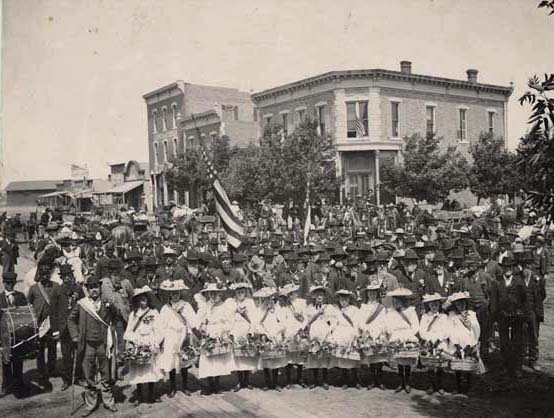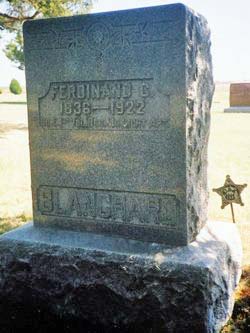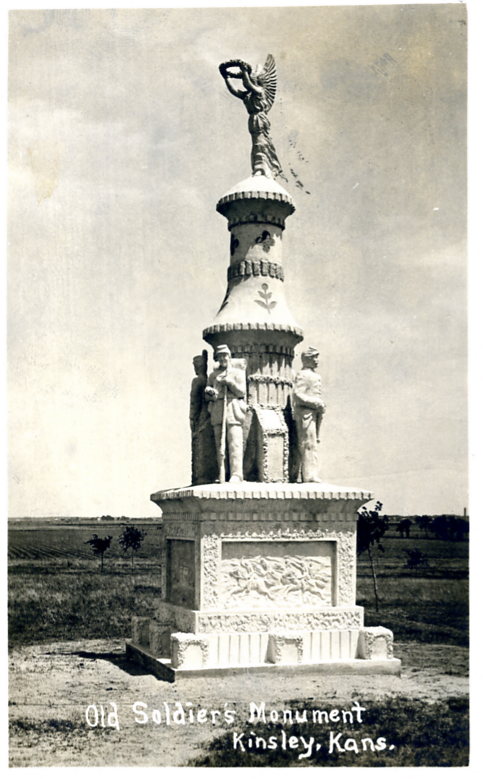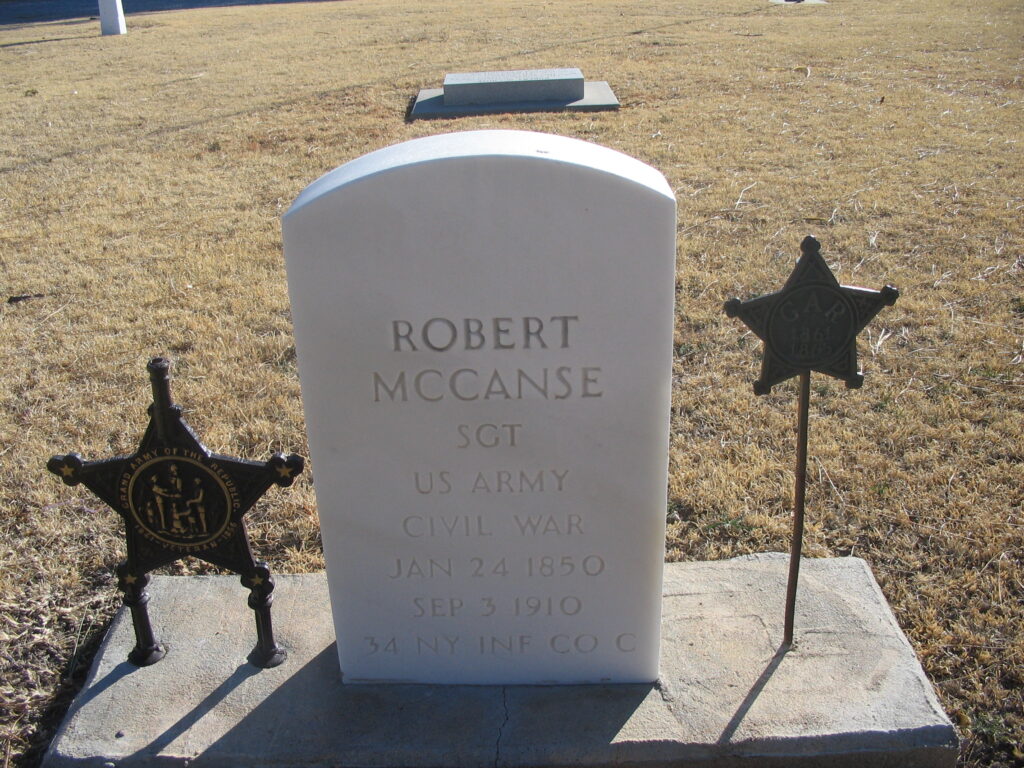Memorial Day is Monday, and many people will spend time at veteran parks and cemeteries remembering those who fought for our country. The day was first called Decoration Day and was created to remember all the fallen Union soldiers of the Civil War. As the years and wars went by, it grew to include all deceased veterans. It became a national holiday in 1971. Today it has come to be a time to remember all loved ones who have passed.
The June 1, 1900 issue of the Kinsley Graphic describes Kinsley’s elaborate commemoration of that same year. The day was beautiful and people “began arriving from the country in all sorts of conveyances from carriage to bicycles.”
“The march to the cemetery began promptly about thirty minutes after the advertised time” (advertised the week before as 10:30 a.m.). I can imagine they may have been delayed in order to take the picture accompanying this article.

Groups of walkers were organized at the town’s side streets, and parade organizers were instructed “to cut out bunch after bunch and start (them) along the trail, using care to see that they did not crowd or stampede along the line.”
That word “trail” jumped out at me as I remember this was a wagon road and not paved at the time.
The procession was led by 31 soldiers and sailors of the Grand Army of the Republic, T. O. Howe Post. They were followed by a firing squad composed of 14 members of the Sons of Union Veterans and the Kinsley Fire Department, fire marshal and drum and fife corps.
“Twelve flower girls, beautifully dressed in white, carrying baskets of flowers” came next followed by the Woodsmen Lodge. Finally, “about two hundred teams and a party of bicyclists with decorated wheels brought up the rear.”
“Arriving at the outskirts of the city, the marchers were taken into the wagons and driven to the cemetery (1.5 miles away) where the graves were decorated by the children and salutes were fired by the squad.”
When they returned to Kinsley a program was held at the Congregational Church which included a reading of the Gettysburg Address, several speeches and music by the church choir. The audience was then called upon to “give the old soldiers the Chicago salute of waving handkerchiefs as the marched out.”
I have deduced from research that whenever women were particularly moved, they would show it by waving their white handkerchiefs. I am not sure why the editor called this the “Chicago” salute as it seemed to be prevalent during the Civil War, and political gatherings afterwards and by the suffragists.
The next sentence reads, “After a word of thanks by Comrade Blanchard, this was done, making a very pretty closing for a very interesting ceremony.”
And there it is, what is fun for me doing local research. Last week we learned that Judge Blanchard had been wounded three times and survived a Confederate prisoner of war camp. He came to Kinsley in 1873 and secured a homestead with his Civil War land grant.
I enlarged the above picture archived in our collection. Comparing to last week’ picture, I believe I was able to locate him standing on the right end of the front row (just in front of the veteran on the end of the second row.)
I invite you to visit Hillside Cemetery this weekend and see the Old Soldiers’ Monument with many Civil War headstones located close by.



